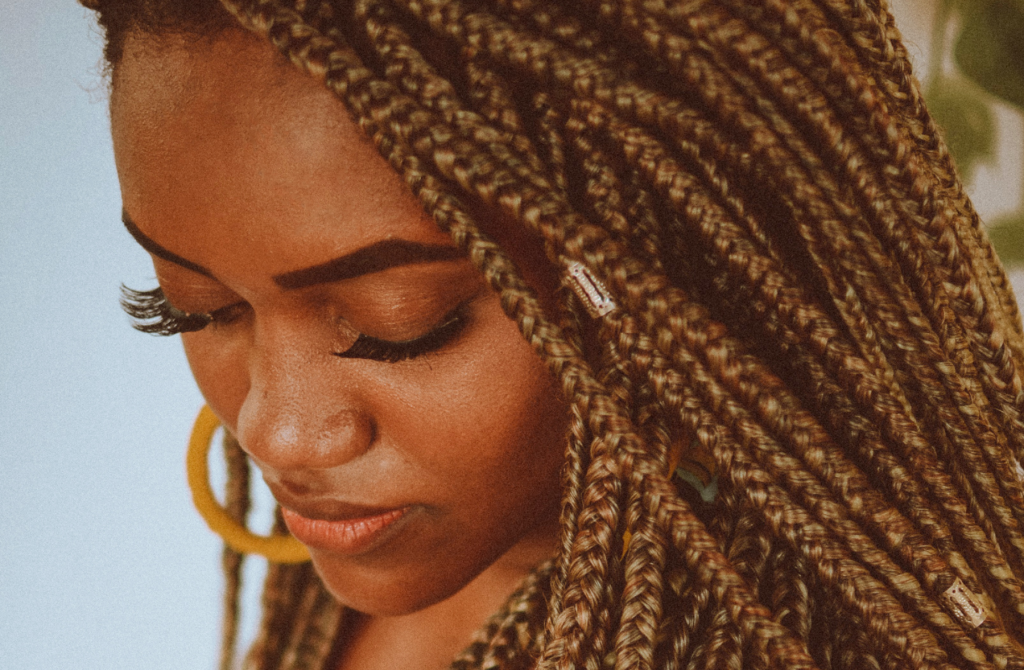Your curls are gorgeous - but if you are experiencing dry, limp, or "just not giving" hair, it could be a protein moisture balance issue.
This balance is what helps your curls stay strong, defined, and hydrated. Too much moisture? Your hair will feel mushy and shapeless. Too much protein? It’s giving brittle. The key is learning what your curls need - and when.
Let’s get into what protein moisture balance actually means, how to spot when your hair’s off-balance, and what to do about it.
What is protein moisture balance?
Protein gives your hair structure. Moisture keeps it flexible. You need both to keep your curls thriving.
Protein = strength- Your hair is made mostly of keratin, a protein that keeps your curls strong.
- Heat, bleach, dye, and pollution can break down keratin over time.
- Protein treatments help rebuild that structure and boost elasticity.
- Moisture helps curls stretch and bounce without snapping.
- If your cuticle is damaged, moisture escapes easily, leading to dry, brittle hair.
- Too much protein: your hair will feel stiff, crunchy, and prone to breakage.
- Too much moisture: your hair will feel mushy, stretches too much, and lacks definition.
How to tell what your curls need
Your hair will always give you clues. Here’s how to read the signs:
Signs your hair needs more protein- Your curls are undefined, or stretched out.
- Your hair stretches too much when wet but doesn’t bounce back.
- Styles don’t last, even with curl-defining products.
- You use heat tools or colour regularly.
- Your hair feels dry or rough.
- Curls tangle easily and won’t absorb product.
- Your hair feels brittle after using protein-rich products.
- Your curls feel dry but also floppy or shapeless.
- Hair snaps easily and lacks elasticity.
- Alternating protein and moisture treatments may help restore balance.
How hair porosity affects balance
Your porosity affects how your hair absorbs and retains moisture and protein.
- Low porosity: Hair resists moisture and protein. Try steam treatments and lightweight products to help absorption.
- Medium porosity: Hair absorbs and retains moisture well. Alternate protein and moisture treatments to maintain balance.
- High porosity: Hair absorbs fast but loses moisture quickly. Regular deep conditioning and protein treatments are key.
How to fix your protein moisture balance
Step 1: ClarifyProduct buildup blocks moisture and protein from getting in. Use a clarifying shampoo once a month (or more often if you use heavy products) to reset your strands.
Step 2: Add protein if neededIf your curls are limp or not holding their shape, add protein. Look for ingredients like hydrolysed wheat, soy, or silk protein. For damaged hair, a keratin treatment can help restore structure. Rice water or fermented protein treatments are also great natural options.
Step 3: Deep condition for moistureAlways follow protein treatments with deep conditioning. This helps restore flexibility and prevents your hair from brittleness. For extra tips, check out our deep conditioning guide.
How to keep your balance long-term
- Alternate based on how your hair feels – moisture weekly, protein every 2–4 weeks or as needed.
- Adjust by season – summer humidity may require more protein, while winter dryness needs extra hydration.
- Pay attention to product results – if hair feels stiff, add moisture; if it’s limp, add protein.
Frequently asked questions about protein moisture balance
How often should I do a protein treatment?
For most curl types, doing a protein treatment every 2–4 weeks is a good starting point. If your hair is chemically treated, heat damaged, or colour-processed, you might benefit from doing it more often. Always follow up with moisture to keep your hair balanced.
Can I overuse protein treatments?
Yes, you can. Too much protein can make your hair feel stiff, dry, or brittle, and may cause it to snap. This is called protein overload. If your hair starts feeling crunchy or straw-like, hit pause on the protein and bring in more moisture.
How do I know if my hair needs more moisture instead of protein?
If your curls feel dry, rough, tangly, or if they’re stiff after using a protein product, they’re probably crying out for moisture. Hair that soaks up product but still feels dry needs more hydration — not more strength.
Can I use both protein and moisture treatments in the same routine?
Absolutely! In fact, it's a smart move. Use a protein treatment first to strengthen your hair, then follow with a deep conditioner to restore softness and elasticity. Think of it as a one-two punch for curl health.
Does hair porosity affect how often I should use protein treatments?
Yes! Porosity matters a lot:
- Low porosity hair tends to be protein-sensitive and may need less frequent treatments.
- Medium porosity hair responds well to regular rotation.
- High porosity hair often benefits from more frequent protein to strengthen weak or damaged strands.
What ingredients should I avoid when maintaining protein moisture balance?
Avoid:
- Harsh sulphates that strip moisture.
- Drying alcohols (like isopropyl alcohol).
- Products loaded with protein if you're already using a protein treatment - too much at once can lead to protein overload.
Check your product labels and rotate wisely.
Should I deep condition after every protein treatment?
Can too much moisture damage my hair?
Can diet affect protein moisture balance in my hair?
Absolutely. Your hair needs protein, iron, vitamins, and hydration to grow and stay healthy. If your diet is missing key nutrients, your strands will show it. Fuel your curls from the inside out with a balanced diet.
Is rice water a good protein treatment for curly hair?
Should I adjust my protein moisture balance routine in different seasons?
Definitely. In the summer, humidity can make curls frizz more and moisture heavy so more protein may help. In the winter, the air is dry, so your hair might need extra moisture. Let your curls guide you and tweak your routine with the weather.
Final thoughts
Strong, hydrated curls aren’t just about the products you use - they’re about knowing what your hair needs and when.
Protein and moisture work best as a team. Once you understand what your curls are asking for, you’ll build a routine that actually works - with no guesswork, no overwhelm, and no breakage.




